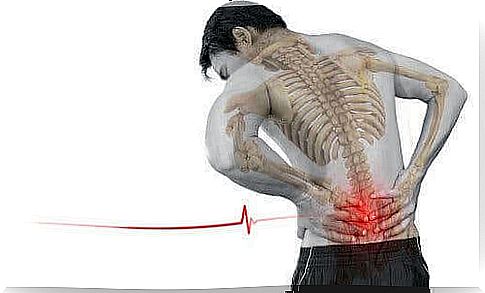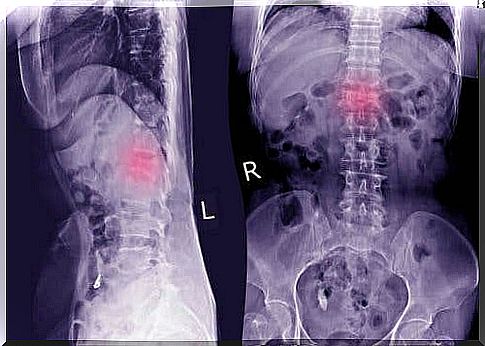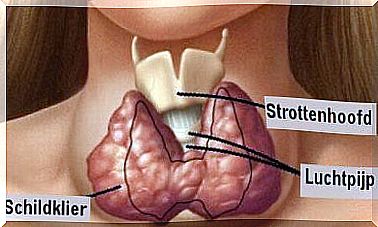What Is Spondylolisthesis And What Are Its Symptoms?

Spondylolisthesis is a condition that refers to the displacement of a vertebra so that it rests directly on the underlying vertebra. It usually affects people over the age of 40. You may have heard the term degenerative, congenital, or isthmic spondylolisthesis. However, the first case is currently the most common.
This term was coined by Newman in 1963 and currently there are different treatments depending on the severity of the disease which we will explain at the end of this article.
What is Spondylolisthesis?
The symptoms
Normally, spondylolisthesis affects the bones of the lumbar region of the back (Spanish link). There can be instances when the problem occurs in the center section; however, this is not common.
But how can you identify it? Despite the fact that there are several symptoms that can indicate its presence, it is important to mention that many patients do not feel anything.

So spondylolisthesis sometimes goes completely unnoticed, after which it gradually gets worse and shows serious symptoms many years later. Let’s look at some of the symptoms some people with spondylolisthesis experience.
- Back pain: This is the most common symptom and appears to be a muscle strain. It is a sharp pain that spreads through the lower back.
- Weakness in the lower extremities: This can cause you to walk with slightly bent knees and short strides. In this case, it is normal to feel tingling and numbness.
- Tense hamstrings: Another symptom of spondylolisthesis is the presence, for no reason, of tension in the back of the thighs. Sometimes it also causes spasms.
- Loss of sphincter control: This is an uncommon symptom but can occur in some patients. Weakness in the lower extremities may impair sphincter control.
Physical manifestations
The symptoms we mentioned are not the only ones that can alert you to the presence of this condition. Here are some other physical symptoms that could be a sign of this condition. Let’s look at a few examples:
- The belly sticks out.
- The torso appears shorter.
- Curves form in the lower back (sagging).
These physical manifestations are easy to overlook. However, if you pay attention to them, you can go to the doctor to perform one of the most important tests that can detect them. We are talking about X-rays. In this way it is possible to clearly see whether there is a displaced vertebra.
In some cases, the doctor may need more specific tests, such as a computed tomography or MRI scan. With these additional tests, they can see more clearly if there is spondylolisthesis and also if it has affected bones and nerves.
Complications of Spondylolisthesis

Despite the symptoms we noted, there are potential complications of this condition that can seriously affect your quality of life.
For example, persistent back pain can lead you to adopt a sedentary lifestyle, which in turn leads to weight gain. Also, inactivity will only promote the loss of elasticity and muscle strength and bone density.
Another consequence is stiffness. A rather serious complication that we should note, however, is the possibility of permanent damage to the nerve on which the displaced vertebra presses.
Despite all this, there are different treatments. The most conservative option is to undergo physical therapy by strengthening the back and correcting your posture.
In other circumstances, you may need surgery. That way, doctors can put the vertebrae that have moved back in place and fix it with screws so it doesn’t move back.
We recommend that you see a doctor immediately if you have back problems, especially if you experience it on a daily basis. It is also important to adopt the correct postural habits to help you avoid or at least reduce these types of problems if they are not congenital.









